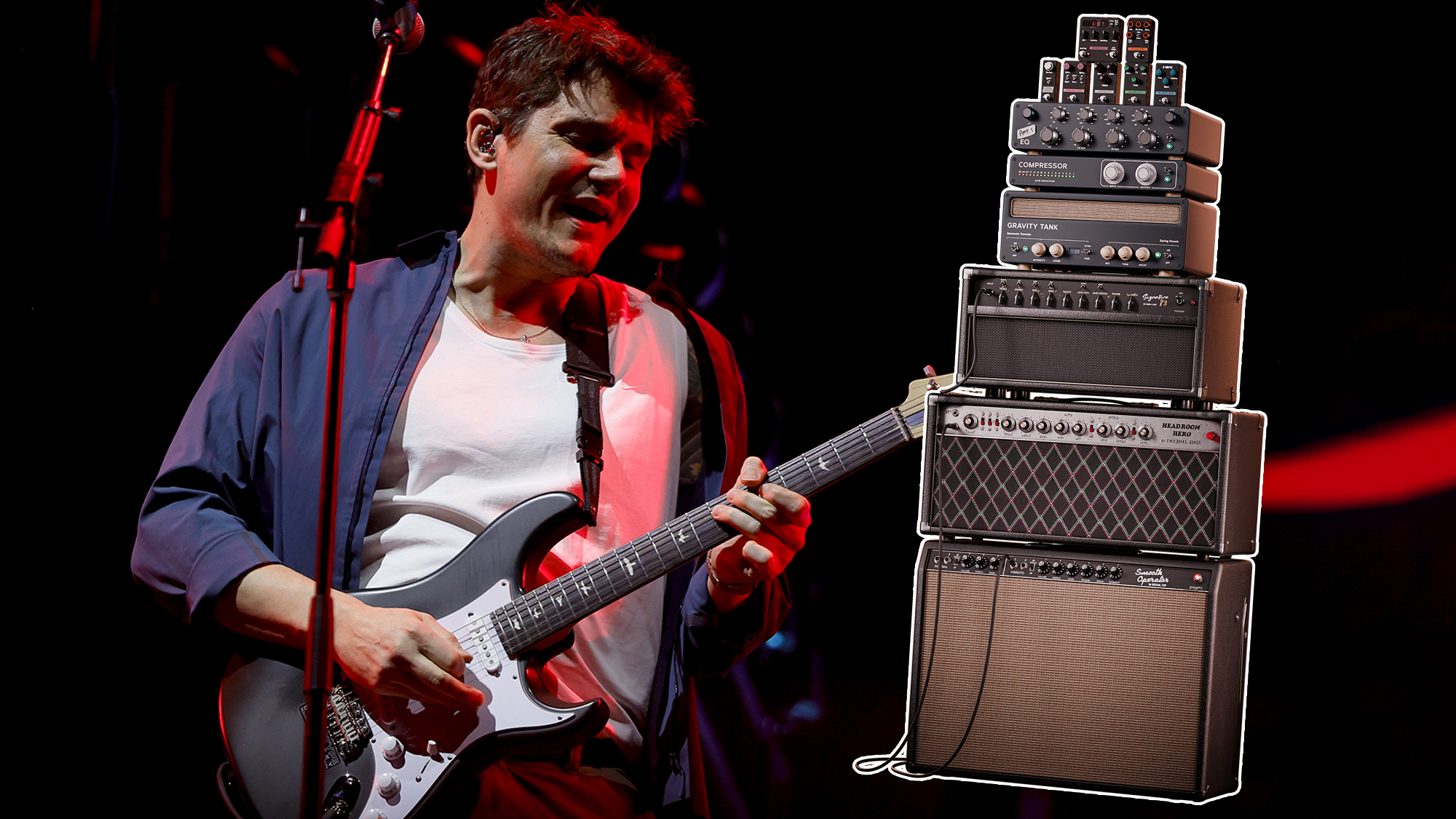“Go into your local shop and pick one up… just try not to kill anyone with it”: How Five Finger Death Punch’s Andy James made one of the most dangerous signature guitars of all time
Now armed with the B.C. Rich Assassin and its lethal Pitchfork headstock, the British shredder reveals what made him jump ship from Kiesel and ESP Guitars, what his last-minute FFDP initiation was really like, and why he couldn’t find any tube amps that “sounded as good and dependable as the Kemper”
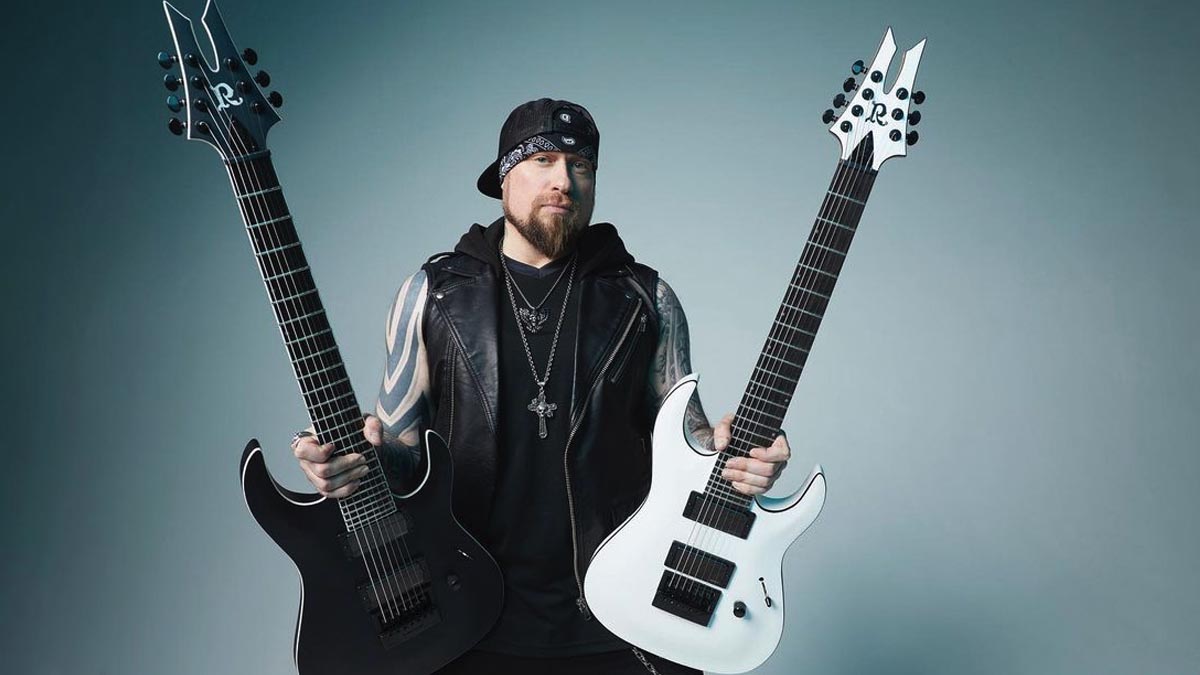
It’s nothing out of the ordinary to find metal players using words like ‘weapon’ to describe the instruments in their hands, but in the case of Five Finger Death Punch guitarist Andy James it’s a lot more than hyperbolic wordplay.
His new B.C. Rich Assassin signature – which was announced last month and comes in six, seven and eight-string forms – has a Pitchfork headstock that could impale just about any living creature it comes into contact with.
When James connects with Guitar World from his home in Las Vegas, where the quintet are based, we jokingly ask if his bandmates have been looking a bit worried and keeping their distance. You know, just in case they discover a whole new meaning to songs like Lift Me Up and The Bleeding...
“Well, yeah, our singer Ivan [Moody] seems to be staying away from my side of the stage!” grins the British virtuoso, who cut his teeth making tutorial videos for companies like Lick Library and playing in bands such as Sacred Mother Tongue, as well as releasing his own solo music.
“Seriously, though, I was talking to B.C. Rich about headstocks and they were showing all these different ones they’d made in the past. And I stumbled on this one, which was actually on a 12-string acoustic!”
Naturally, it took a bit of tweaking to make it work for an electric instrument – James revealing how the headstock was eventually narrowed and lengthened, with the tuning pegs spaced out compared to the original design. Their efforts resulted in quite possibly the most dangerous headstock ever conceived and something that screamed the words ‘heavy’ and ‘metal’ like nothing else in existence...
“We ended up this mammoth Eye of Sauron-style headstock!” continues James. “It’s very pointy and metal, and very B.C. Rich. But I can also see it’s a Marmite guitar, people will either love it or hate it, which is great. If everyone loves something, weirdly it doesn’t get talked about much. This signature is like putting the cat amongst the pigeons. So yeah, go into your local shop and pick one up… just try not to kill anyone with it!”
All the latest guitar news, interviews, lessons, reviews, deals and more, direct to your inbox!
As well as one of the most hazardous headstocks in the history of guitar manufacturing, the new line of instruments feature a low-profile C-shaped satin neck that’s “optimized for speed” and a heel-less neck-through construction.
Other notable features include the mahogany nyatah palaquium body, a flame maple top and a five-piece Shredzilla Ultra Slim Contour neck, plus an ebony fretboard and a pair of Fishman Fluence Modern humbuckers.
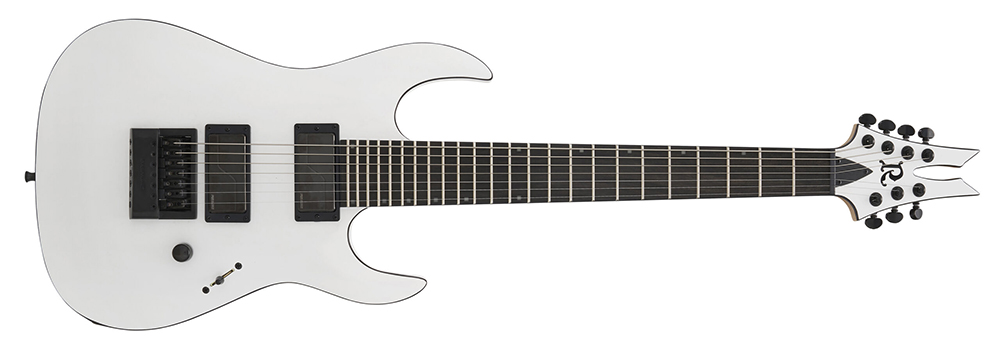
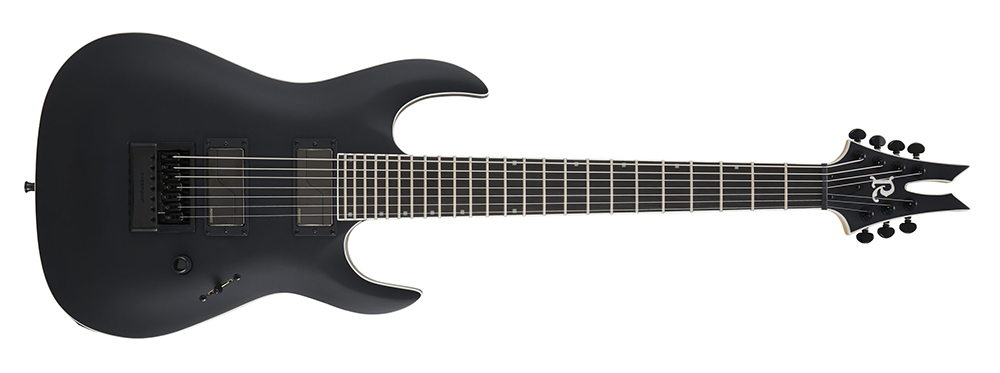

Given the kind of music James is well-known for playing and the history of B.C. Rich guitars in general – with famous users including Kerry King, Trey Azagthoth and Chuck Schuldiner, as well as classic rock giants like Slash, Joe Perry and Lita Ford – it’s a metal machine in every way imaginable.
James, who was a Kiesel endorsee until the new partnership, is proud to play his part in furthering the brand’s legacy, and feels a renaissance is long overdue...
Jumping from one company to another can be a bit weird if you’re used to a specific kind of guitar. It had to be on par, if not better, for me to consider moving
“B.C. Rich are a legendary company for many reasons,” he notes. “Right now, there’s definitely a big push for new artists and models. I want to be part of it and help get it back up there again. Stranger Things gave them a kick up the arse, too, with the whole Eddie Munson connection.
“I’ve always been a B.C. Rich fan – one of the first guitars I picked up was a red Warlock that belonged to a friend. And obviously Slash is a big hero of mine and I’ve always been in love with that red Mockingbird he used for You Could Be Mine. They’re such an iconic brand.
“It just so happened that my five-year contract with Kiesel came up at the beginning of this year. I was talking to Zoltan [Bathory, co-guitarist] and Chris Kael [bassist] about gear, they’re both B.C. Rich artists. I figured I’d give them a try and see how I got on.
“Jumping from one company to another can be a bit weird if you’re used to a specific kind of guitar. It had to be on par, if not better, for me to consider moving, and I was blown away by the quality of what they sent over…”
Was it hard breaking the news to Kiesel?
“Me and [owner] Jeff Kiesel had a conversation. I like to be up-front and transparent. I’d expressed things I wanted to do moving forward as a member of FFDP. A few of them didn’t really fall inside the Kiesel business model, because it’s a direct-to-consumer custom shop. For example, if I wanted to do stage-played guitar packages or have worldwide distribution, it’s not really in their remit.
“I was a bit worried about telling Jeff, but he was nice enough to say, ‘You’re my friend first, if this is going to help you in your career, go for it!’ Before Kiesel, I was with ESP for about 10 years. They gave me my first signature model, which was great, but things didn’t really work out. ESP had so many massive artists, I was way down in terms of the roster and priority list.
“I had some problems with production on a bunch of my guitars. The communication broke down to the point where I felt I should move. I met Jeff at a NAMM show and hit it off. He gave me a few options to look at and I signed a five-year contract. Everything was great; there were no problems with the company or Jeff himself.”
What amps are you currently using in FFDP?
For my first 13 shows, because it was so last-minute, I had Jason Hook’s EVH 5150III EL34 rig
“We’ve been using Kempers live. I’ve had mine for ages, well before I’d even joined the band. For my first 13 shows, because it was so last-minute, I had [ex-guitarist] Jason Hook’s EVH 5150III EL34 rig. It was a wet-dry-wet thing, with the two outer cabs being effected and the middle one being dry… an arena-worthy setup!
“Me and my tech got talking about building a new rig for me. Because of the arenas, we felt it would be nice to have a massive rig. I’d never done that before, so the opportunity to spend money and do something cool was very attractive.
“We tried out different heads for a similar setup. I’ve got a Laney VH100 that works great for solos because I’m a huge Andy Timmons fan. I love that Laney tone! But we just couldn’t get anything that sounded as good and dependable as the Kemper.”
That’s interesting – you actually preferred the sound of digital, as well as the convenience...
“I must have spent $20k on amps, cases and cable. In the end, I just drove home and got my $1,500 Kemper. I plugged it into a cab, turned it on and it was like, ‘There you go!’ It just worked. Zoltan had been using his Diamond valve amps on stage for the last 15 years. During one rehearsal, he was getting frustrated with his sound and we’d already profiled his amp back when I first moved out to Vegas…
“So I said, ‘I’ve got your tones in my Kemper, give it a go!’ And he was so into it, we couldn’t get him off the guitar for 30 minutes. The next day he bought eight Kempers and changed his entire rig. That’s when I thought, ‘I guess we’re a Kemper band now!’
“What blew us both away is that it’s very player-reactive – you can take screenshots, but they will differ depending on who is plugged in. We created profiles using the exact same settings, and his had way more bottom-end. There was this inherent heaviness to his fingers that mine didn’t have – maybe I’m geared up slightly differently, for different things!”
So if he’s using Diamond profiles, which ones are you running?
I was on a plane sat where all the flight attendants strap in for takeoff and carried on learning. Everyone else was chilling in bed and having posh first-class dinners, and I was there with my guitar and my headphones in!
“My main ones are from my original STL Tones session. Craig Daws, who played with me in Sacred Mother Tongue for a bit, is into engineering. So we booked a studio and took a bunch of heads and cabs. He had a 6505+ that was bias-modded to be hotter and heavier. I think they bias them quite cold out of the factory to maintain the tubes as long as possible, but he’d juiced this one up.
“Sure, you probably pop tubes a bit faster, but the tone is fucking great. That went into an oversized Mesa cab with three mics: a 57, a 421 and one of those pressure boundary mics for drum kits. We created a bunch of tones with that blend and I haven’t used anything else since! Nothing, to my ears, sounds better.”
Let’s go back to you landing the FFDP gig. They were midway through a European tour when you got the call...
“I had no idea this was going to happen. I was talking to Zoltan because my ex-wife wanted to go see them. I sent him a message asking if it was okay if she came down and he asked his assistant to get her sorted. And then the day after he sent me a text message asking, ‘What’s your music retention like?’
“I didn’t really know what he meant, so I asked him to explain and he came back with, ‘Do you think you could learn our whole set? Because we might need you!’ And I said, ‘Oh okay, no worries, send over the setlist!’ I was already a fan of the band and knew the songs anyway, even if I hadn’t worked them out by that point. But I put the phone down and it was panic stations! I didn’t sleep that night.
“Most of their stuff is in B standard six-string tuning and I only had a seven-string with me. I had no way of playing it the way it was meant to be, so I had to transpose everything and figure it all out.”
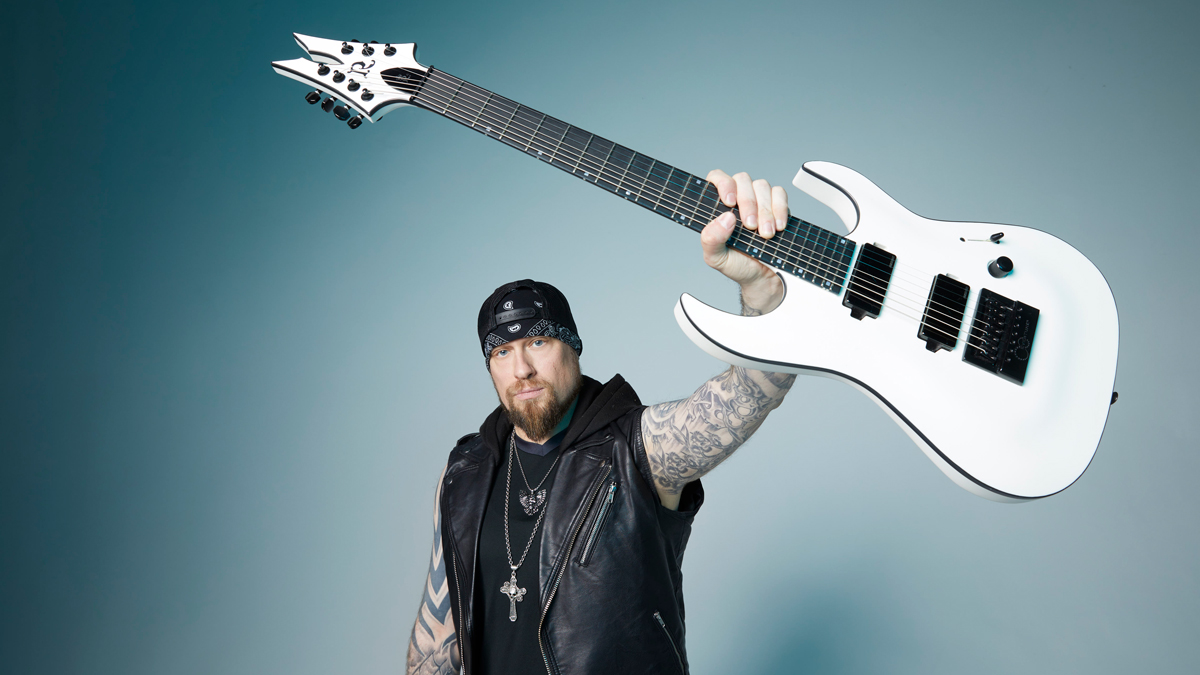
It all happened quite fast by the sounds of it, but you managed to score a fulltime role in one of the world’s biggest modern metal bands...
“I was on a plane sat where all the flight attendants strap in for takeoff and carried on learning. Everyone else was chilling in bed and having posh first-class dinners, and I was there with my guitar and my headphones in! My first show ended up being in Hamburg.
“When you listen to a record, you can hear the parts but you might not know who’s doing what. So I got to see a couple of shows and see what each guitarist was doing. I didn’t see Jason, though – I don’t even think he knew I was there. I guess there was a lot going on and I was just staying out of it.”
That first gig must have been quite memorable...
Zoltan runs his band like a football team. He’d rather do the gig with somebody else than let fans or promoters down
“Yeah! We didn’t even have a proper rehearsal. It was just four guys in a room with Roland Cubes going through the songs backstage. I was sat in Zoltan’s room before the show, Ivan came over and they said, ‘Look man, we’re happy you are helping us out – we won’t be looking at you the whole time to see what could go wrong... just go out and have fun!’
“It went alright. I hadn’t used in-ears or played an arena full of 12,000 people before. I already knew Charlie [Engen, drums] from before because he was playing drums for Angel Vivaldi and Scale the Summit before he joined FFDP.
“18 months later, him and Zoltan were having a jam session. Zoltan likes to keep his finger on the pulse when it comes to guitar players, so he pulled up one of my videos and asked Charlie if he’d heard of me. Charlie said we were good friends and mentioned FFDP were one of my favorite bands.”
Well, that can’t have hurt!
“Zoltan was like, ‘Really?!’ Because maybe he thought instrumental shred and massive radio success bands didn’t really cross over much. I think he was surprised by that. Maybe even back then, he was thinking about the future. He’s a very chess player-like person. A promoter once told him that he’s the only person that operates with a subs bench in mind.
“He runs his band like a football team. He’d rather do the gig with somebody else than let fans or promoters down. We had it even recently when Ivan was unwell so we got people like Phil Labonte, Howard Jones and AJ Channer [Fire From the Gods] to cover. He’ll always have people in his back pocket in case of emergencies.”
It probably helped that you were a fan of Jason Hook’s Van Halen-esque sense of flair, too...
“That’s another reason why I really liked them! I love the big songs, but the soloing style within the context of the band always appealed to me. And you’re right, he was coming from that Van Halen and George Lynch kind of place. There was also a bit of Nuno in there too, because some of his licks were really percussive. Coming into the band, I knew his style had such an identity with them.
“It’s still a bit weird for me listening to AfterLife, because I’m playing on it. There was a degree of imposter syndrome, because Jason was in the band for 11 years.
I can’t be Jason – that would be impossible – but I wanted to wangle my own sound into what they’d done before
“I’m a guitarist in my own right but also needed to respect the sound of the band. I can’t be Jason – that would be impossible – but I wanted to wangle my own sound into what they’d done before. It would have been weird for me to come in and piss all over it, showing off with little regard for the songs.”
Anyone who has listened to your solo albums or seen your instructional content will be aware of your ferocious alternate-picking skills. What helped you get to these levels of speed?
“I think discovering the dominance in my upstroke was the thing that helped the most. The three-note-per-string stuff, like that four-note or six-note Paul Gilbert exercise, is a big challenge for all of us. He even later admitted that one of his most iconic lessons is also one of the hardest things you can do, playing three notes, changing strings with an upstroke and then coming back down again.
“I had to change it slightly to make it work. I’d go up five or six notes and then come back, instead of four. Adding in that extra note or two would allow me to have a pull-off coming back. I wouldn’t have to pick the last note before returning to the string I started on. So now I make sure there’s a pull-off or hammer-on somewhere. I do this technique where I pick two notes, then hammer-on the third, then I change strings and do the same thing again.
“That way I can go all the way up a scale shape and skip a third of the picking, allowing myself to get ready for the run on the next string every time! And if you use a bit of palm-muting, you can almost make the legato sound like picked notes… that’s another good cheat, too! It was a massive thing for my playing.”
While we’ve got you, please tell us some more of these cheats you’ve picked up over the years!
“Sure! I couldn’t pick those Eric Johnson-style pentatonic runs for a long time. It wasn’t until I was in a Lick Library session trying to do Fixation on the Darkness by Killswitch Engage, which involved four picked notes at a time. The guys filming it were falling asleep in their chairs waiting for me to nail it. We were burning through tape, so I told them to go get some lunch while I figured it out.
“By the time they came back, I had worked out how to do it. And that’s when I realized on even-note groupings, I have to start on an up-stroke. Obviously pentatonic runs are often two notes per string, so I tried burning through those licks starting with an up and within five minutes I was up to speed. It was a major breakthrough for me.”
Well, you can certainly nail the intensity and attack of legends like Paul Gilbert, John Petrucci and Zakk Wylde...
“Alternate picking sounds aggressive – that’s what I love about it. I knew early on that my left hand moved faster than my right. It took a while for my two hands to sync up. You need strong legato for sweeping. I do the Richie Kotzen thing where I sweep down and then use legato coming back up. That was my main takeaway from his Rock Chops DVD.
“But I’ve always loved the Gilbert, Petrucci and Wylde approach to picking. Those guys sound so aggressive and it seems to translate better for live shows. I kept on drilling and drilling to get there… it didn’t come easy!”
- For more information on the Andy James Signature Assassin, head to B.C. Rich.
Amit has been writing for titles like Total Guitar, MusicRadar and Guitar World for over a decade and counts Richie Kotzen, Guthrie Govan and Jeff Beck among his primary influences as a guitar player. He's worked for magazines like Kerrang!, Metal Hammer, Classic Rock, Prog, Record Collector, Planet Rock, Rhythm and Bass Player, as well as newspapers like Metro and The Independent, interviewing everyone from Ozzy Osbourne and Lemmy to Slash and Jimmy Page, and once even traded solos with a member of Slayer on a track released internationally. As a session guitarist, he's played alongside members of Judas Priest and Uriah Heep in London ensemble Metalworks, as well as handled lead guitars for legends like Glen Matlock (Sex Pistols, The Faces) and Stu Hamm (Steve Vai, Joe Satriani, G3).





